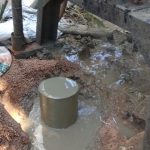Best Rainwater Harvesting methods
Introduction
Rainwater collection makes economic and environmental sense for several reasons: it will increase water supply, agricultural yield, and, ultimately, food security. Individuals in rural regions who are water insecure will benefit the most from rainwater gathering devices. Since rainwater is the primary supply of groundwater, rainwater harvesting is significant. In general, Rainwater harvesting is a It is a method for reusing and preserving rainwater that involves collecting rainwater that has fallen directly on surfaces such as rooftops, purifying it to a better level and using it when needed.
Different effective methods used for Rainwater harvesting are;
Harvesting rainwater through
- Percolation pit method
- Open wells
- Ditch and furrow storage.
- Broken brick method
- Well cum canal cum percolation pit method.
- Defunct bore well method.
- Ponds.
- Recharge wells.
- Service well cum recharge well method.
Now, let us discuss the methods in detail.
1. Percolation pit method
Percolation pit is a hole drilled into the ground. It aids in the recharge of groundwater by pumping water downward through the soil. A percolation tank is an artificial reservoir built over a stream and submerging a land area with sufficient permeability to allow surface water run-off to collect and percolate within the permeable land. This is one of the most efficient ways to restore the groundwater table (also known as groundwater recharge). These are earthen dams with masonry constructions exclusively for the spillway, and they are recommended over second and third-order streams.
Percolation tanks are found in abundance in a state like Tamil Nadu, Andhra Pradesh, Karnataka, Gujarat and Maharashtra.
2. Open wall
Although rainwater harvesting has been introduced in all Urban Local Bodies, it is now felt that some of the structures need to be modified. Recharging deep fractures and fissures with a recharge bore wells and open wells has proven to be more successful. Rainwater collected from rooftops can be utilised to recharge groundwater aquifers through a variety of structures, ensuring that rainwater percolates into the ground rather than draining away from the surface.
The open wall method is one such useful and easy method to understand and implement.
Comprehensive rainwater harvesting construction services for individual houses, apartments and buildings.
3. Recharge wells
In regions where the aquifers are overlain by a large layer of impermeable rock, a new recharge tube well can be created for refilling the captured rainwater. Constructing a settlement-cum-storage tank adjacent to the tube well helps in the settlement of silt particles and storage of surplus water. These wells are used for refilling single/multiple aquifers.
The storage tank’s clear water is directed to the recharge tube well for recharging. It’s ideal for recharging large buildings ‘/blocks’ rooftop rainfall.
4. Ponds
This is a process of installing a Shaft at the base of a recharge pond. It is found that that rainfall running freely across fields and farms over long distances tends to collect significant amounts of silt, which are the tiniest soil particles suspended in precipitation. Each year, the ponds are gradually filled with silt.
5. Broken bricks method
Water that falls on the open terrace can be collected using pipes and pumped into a well or a trough at ground level.
- The filtering trough should be constructed in the following manner.
- At the bottom, one foot of broken bricks or stones should be put.
- The trough’s top-level must be filled with river sand.
- If necessary, the trough can be sealed with a cement slab.
6. Ditch and furrow storage
Ditches are built to transport water from storm runoff to a suitable exit. A good ditch is formed and lined with the right vegetative or structural material, and it does not flood, erode, or sediment.
On the top side of the hill, a furrow is created next to each bank. Depending on the rainfall and slope, the distance between the ridges ranges between 1 and 2 metres. Contour furrows collect runoff water from the catchment region between them, concentrating moisture onto the ridge and furrow area where the crops are planted.
7. Service well cum recharge wells method
In places where the surface soil is impermeable and huge amounts of roof water or surface runoff are accessible in a brief duration of heavy rainfall, trenches/pits are used to store the water in a filter medium and then refill the groundwater through specially designed recharge wells.
Comprehensive rainwater harvesting construction services for individual houses, apartments and buildings.
8. Defunct bore well
Some Bore wells become defunct when the water is extracted and the level falls below the bore-wells. Fresh rains revive defunct borewells via a rainwater harvesting system. Also, However, since the existing defunct borewells already provide a conduit to the aquifer structure, it is a suitable place to replenish the groundwater utilising extra monsoon runoff water, with appropriate minor pipe modifications and filter mechanisms. The groundwater may be recharged using both rooftop rainfall and surface drainage.
Stormwater collection in cities/towns will also be performed via,
Collecting rainwater through stormwater.
Stormwater storage ponds are being built in the flow accumulation sites.
By redirecting surface runoff/stormwater flow, special attention will be paid to refilling the defunct bore wells that are scattered across the ULBs.
9. Well cum canal cum percolation pits
If a dug-cum-bore well is operated by a pump set and the suction pipe of the pump is installed on the boring section itself, the well practically becomes a tube well. However, in such wells, the flow of groundwater from the upper unconfined aquifer into the well is restricted. The well staining then serves the purpose of a pump house only. In such a situation, the construction of a regular tube well will be more economical than a dug cum-bore well.
It’s always good to check both the advantages and disadvantages of a concept, before moving deep. Some disadvantages of Rainwater harvesting are,
Unpredictable rainfall,
Stormwater storage ponds are being built in the flow accumulation sites.
Initial high cost,
Storage limit,
Regular and careful maintenance,
I hope that this entire article is informative and useful for you.





